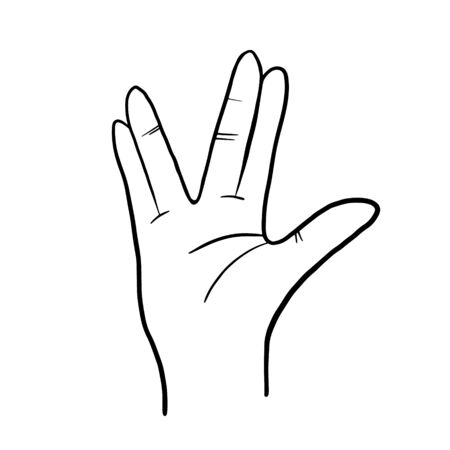1. Introduction: Setting the British Context
Britain’s cultural landscape is a tapestry woven from centuries of tradition, innovation, and social evolution. Renowned for its quintessentially understated charm, dry wit, and a profound respect for history, British society has long balanced rational thought with a fascination for the mysterious. This unique cultural blend has provided fertile ground for esoteric practices to take root and flourish in unexpected ways. Among these practices, palmistry—also known as chiromancy or the art of reading hands—has enjoyed a particularly intriguing journey through British history. While palmistry’s origins can be traced to ancient civilisations far beyond these isles, its adaptation within the British context reflects local attitudes, beliefs, and even class structures. As we explore how British culture has shaped palmistry practices over the centuries, it becomes clear that this interplay reveals much about the nation’s evolving identity and its relationship with both science and superstition.
2. Early Encounters: Palmistry’s Arrival and Medieval Perceptions
The history of palmistry in Britain is a tale woven through centuries, echoing the islands’ cultural receptivity and scepticism alike. Palmistry, or chiromancy, is thought to have arrived in Britain during the early medieval period, likely introduced by itinerant scholars, traders, and Romani people. While the practice had roots in ancient India and spread across the Middle East and continental Europe, it found unique soil in British society.
Upon its arrival, palmistry was met with a complex mix of fascination and caution. Medieval Britain was shaped by strong religious doctrine; anything perceived as divination risked condemnation by the Church. Yet, palmistry often straddled the ambiguous line between science and superstition. It was sometimes referenced in scholarly texts alongside astrology and herbal medicine, hinting at its semi-legitimate standing among intellectual circles.
Reception in Medieval Society
| Aspect | Perception | Influence on Palmistry |
|---|---|---|
| Religion | Sceptical, often hostile; associated with heresy or witchcraft | Palmists worked discreetly or integrated Christian symbolism to avoid persecution |
| Intellectual Circles | Cautious curiosity; sometimes included in natural philosophy | Palmistry texts circulated among some scholars; attempts made to rationalise the practice |
| Folk Traditions | Open acceptance; seen as part of wider folk magic traditions | Palmistry blended with local superstitions and healing practices |
Connections with British Folklore
Palmistry’s integration into British folklore was subtle yet enduring. Village wise women and cunning folk incorporated hand-reading into their repertoire of services, offering advice on marriage prospects, health issues, or future fortunes. The lines of the hand were linked to tales of fate and destiny—a reflection of broader European mythologies but distinctly flavoured by local beliefs about luck and omens. Over time, these early encounters set the stage for palmistry’s unique evolution within British culture, establishing patterns of both suspicion and intrigue that would shape later perceptions.

3. Victorian Curiosity and the Occult Revival
The Victorian era in Britain was marked by an intriguing interplay between scientific advancement and a burgeoning fascination with the occult. As the country underwent rapid industrialisation and technological progress, there emerged a parallel cultural current: a widespread curiosity about the mysterious, spiritual, and unexplained. This paradoxical environment proved fertile ground for palmistry to flourish. Intellectual salons and drawing rooms became venues for both rigorous debate and the playful exploration of esoteric practices, with palmistry often sitting at this intersection. The Victorians were deeply interested in cataloguing and understanding every aspect of the human experience, from anatomy to psychology. Yet, they also harboured a collective yearning for enchantment and meaning beyond the material world. Influenced by figures such as Cheiro (William John Warner), who made palm reading fashionable among the elite, palmistry was reframed as both a scientific pursuit—subject to classification and study—and a mystical art capable of revealing personality traits and destiny. In this way, Victorian attitudes not only legitimised but popularised palmistry across different social classes, embedding it within British cultural life as both entertainment and a tool for self-reflection.
4. Language, Class, and the Social Acceptability of Palmistry
British culture is famously stratified, with intricate layers of class structure and a rich tapestry of regional dialects. These factors have played a pivotal role in shaping not only how palmistry has been perceived throughout history, but also how it has been practiced across different communities. The interplay between language, class, and etiquette has ensured that palmistrys reputation and methods have remained uniquely British, evolving alongside society’s expectations and prejudices.
Class Structures and Palmistry’s Reputation
Historically, Britain’s rigid class divisions meant that palmistry was received differently depending on ones social standing. Among the upper classes, palmistry was often dismissed as mere superstition or parlour entertainment, something to amuse guests at country estates without being taken seriously. In contrast, the working classes sometimes viewed palmistry as a practical tool for insight or guidance during uncertain times. This dichotomy influenced who practised palmistry and how openly it was discussed in public.
| Social Class | Attitude Towards Palmistry | Common Context |
|---|---|---|
| Upper Class | Sceptical, Entertainment-focused | Private gatherings, parlour games |
| Middle Class | Cautious interest, Intellectual curiosity | Literary circles, salons |
| Working Class | Pragmatic acceptance, Guidance-seeking | Fairs, marketplaces, family settings |
The Role of Regional Dialects and Language
The diversity of British dialects has also coloured palmistry practice. Certain terms and superstitions associated with hand reading differ from region to region—what might be called “fortune telling” in Yorkshire could be “hand reading” in Cornwall. Such linguistic distinctions affect not just vocabulary but also attitudes: some regions historically embraced palmists as respected members of the community, while others relegated them to the fringes.
Etiquette and Social Acceptability
Etiquette has always played a critical role in determining when and where it was appropriate to discuss or practise palmistry. For instance, Victorian-era conventions dictated that matters of the occult were not suitable for polite conversation among certain company. This led to coded language or euphemisms when referring to palmistry in mixed or formal groups. Even today, British politeness can mean that people are less likely to admit an interest in palmistry except among trusted friends.
Summary Table: Factors Shaping Palmistry Perceptions in Britain
| Factor | Influence on Palmistry Practices |
|---|---|
| Class Structure | Affected public perception and practitioner status; determined openness of discussion. |
| Regional Dialects | Shaped terminology and local customs surrounding palmistry. |
| Etiquette Norms | Set boundaries for acceptable discourse and practice environments. |
Together, these elements highlight the ways in which British cultural nuances have left their mark on the practice of palmistry. Whether through the subtle code-switching required by etiquette or the varied terminology shaped by local dialects, the story of British palmistry is inseparable from its social context.
5. Palmistry in British Popular Culture
The influence of palmistry on British society is not confined to scholarly circles or esoteric gatherings; it has seeped into the very fabric of popular culture, making its mark on literature, film, television, and the arts. Analysing these cultural references reveals how palmistry has been both a subject of fascination and a lens through which broader social themes are explored.
References in British Literature
British authors have long used palmistry as a literary device to probe character motivations or foreshadow events. For instance, in classic works such as Charles Dickens “Great Expectations,” the mysterious atmosphere around fortune-telling and palm-reading reflects Victorian anxieties about fate and self-determination. Similarly, Agatha Christies detective novels occasionally feature palmists whose insights provide subtle clues or red herrings, underscoring the British penchant for mystery and intrigue.
Palmistry on Screen: Film and Television
On screen, palmistry often appears as a motif symbolising uncertainty, hope, or the search for meaning. In post-war British cinema, scenes involving palm-readers in fairgrounds or city streets capture both the everyday nature of the practice and its association with working-class life. More recently, television series such as “EastEnders” and “Coronation Street” have included storylines where characters seek advice from palmists during periods of personal crisis, reflecting the enduring belief in hidden knowledge even amidst modern scepticism.
Integration into Everyday Life
This presence extends beyond fiction. British arts festivals frequently feature palmistry booths alongside other traditional entertainments, while local newspapers may still carry advertisements for professional palmists offering guidance. The continued popularity of palmistry at village fêtes and seaside resorts attests to its role as both entertainment and informal counselling within communities.
Reflection of Social Attitudes
The portrayal of palmistry in popular culture often mirrors evolving British attitudes towards spirituality, science, and class. While some depictions lean towards satire—highlighting the quintessentially British love for irony—others treat palmistry with earnestness, recognising its capacity to provide comfort or provoke thought. This duality illustrates how deeply embedded palmistry is within the national psyche: at once a playful tradition and a serious vehicle for exploring destiny, identity, and choice.
6. Modern Practices and Contemporary Attitudes
In the twenty-first century, British attitudes towards palmistry have become notably complex, reflecting both the country’s sceptical rationalism and its rich cultural diversity. While the heyday of parlour palmists and public fascination may have waned since the Victorian era, interest in palmistry persists—though often reframed as a curiosity or an aspect of holistic wellbeing rather than a source of absolute truth. Contemporary Britons, shaped by a legacy of scientific progress and a national fondness for critical thinking, tend to approach palmistry with a blend of open-mindedness and healthy doubt. Scepticism is almost a default stance; discussions about palmistry are frequently laced with humour or self-awareness, illustrating the British tendency to gently mock what is seen as eccentric without outright dismissal. At the same time, modern Britain’s multicultural landscape has introduced new perspectives on hand reading. Palmistry practitioners today may draw on Indian, Romani, or Chinese traditions as well as homegrown interpretations, creating a hybrid practice that reflects the UK’s diverse population. In urban centres like London and Manchester, it is not uncommon to find palmists offering their services at wellness festivals or community events, catering to those who see value in ancient wisdom or personal storytelling. Social media has also played a role, allowing contemporary British palmists to connect with audiences both locally and globally, sharing insights that blend traditional knowledge with modern psychological understanding. Ultimately, the British approach to palmistry in the present day is characterised by a respectful curiosity: people may not take it entirely seriously, but they recognise its place in the nation’s cultural tapestry—as both a historical artefact and a living practice continually reshaped by new attitudes and influences.
7. Conclusion: Lasting Cultural Imprints
In summing up how British culture has shaped palmistry practices over the centuries, it is clear that this art has been continually redefined by local customs, social attitudes, and the broader intellectual climate of each era. From its early days as a curiosity at royal courts and in travelling fairs, through Victorian spiritualism to contemporary self-development circles, palmistry in Britain has always carried distinctively British nuances. The nation’s pragmatic scepticism has often required practitioners to frame palmistry in terms of entertainment or psychology, rather than strict fortune-telling, ensuring its survival and gradual respectability. Moreover, the British penchant for privacy and subtlety has influenced both the language and approach of palmists, favouring gentle guidance over bold prophecy. Today, as ideas around personal well-being, mindfulness, and heritage enjoy renewed attention, British palmistry continues to evolve. Digital communities now allow for wider sharing of techniques while retaining a sense of tradition rooted in local history. Looking forward, we can anticipate that palmistry will further integrate with holistic wellness trends and adapt to changing cultural norms—yet always bearing the quiet imprint of British reserve, wit, and adaptability. This enduring interplay between old and new is what keeps British palmistry both relevant and distinctly local in character.


